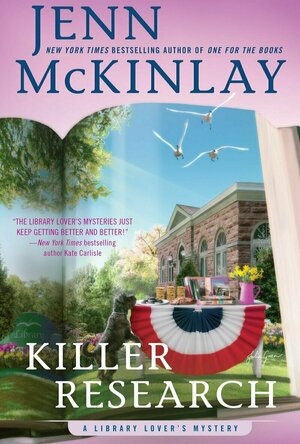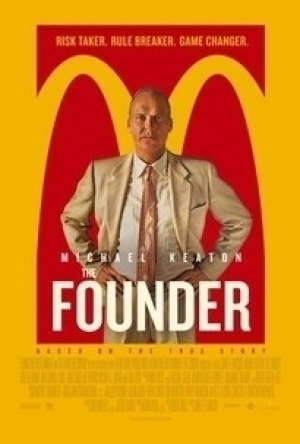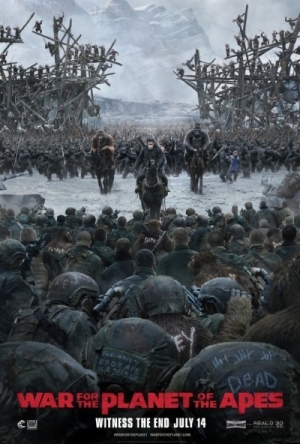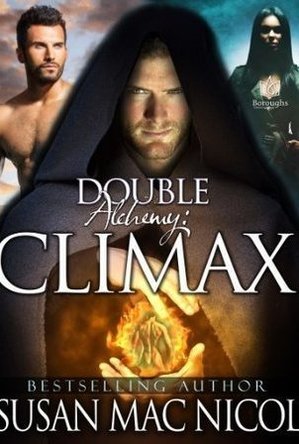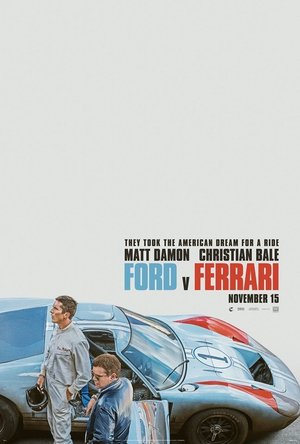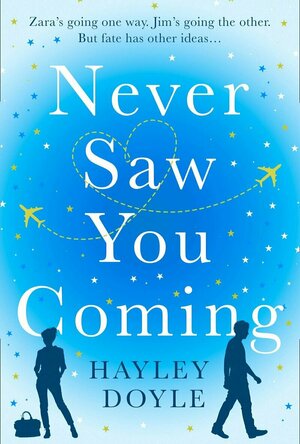Search
Search results

Landscape Gardens
Book
The Landscape Garden: the quiet but startling national revolution that overthrew the parterres,...
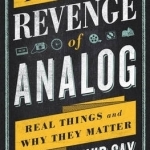
The Revenge of Analog: Real Things and Why They Matter
Book
One of Michiko Kakutani's (New York Times) top ten books of 2016 A funny thing happened on the way...

Briefcase - File manager & document pdf reader
Business and Productivity
App
Briefcase is an all-in-one document reader and manager for iPhone, iPad and iPod Touch. It can...
Mark @ Carstairs Considers (2464 KP) rated Killer Research in Books
Nov 3, 2021
Murder Complicates Elections
The election for mayor is six months away, but the politics is already heating up. Mayor Hensen is upset that Ms. Cole is running against him, and he’s making life difficult for Lindsey Norris and the rest of the library staff. Then, Ms. Cole finds a dead body in her trunk. When her connection to the victim comes to light, the mayor uses everything he can to drive Ms. Cole out of the library and out of the race. Can Lindsey figure out what is happening before Ms. Cole’s reputation is ruined?
I love it when background characters get time to shine, and I’ve enjoyed watching Ms. Cole go from a one note character to a fully developed character over the last few books. That continues here. The rest of the cast is just as fantastic, and I loved seeing them again. The plot is strong with plenty to keep me engaged as I read. The climax was a bit theatrical, but it was also fun, so I’m willing to let it go. Speaking of fun, I laughed multiple times over the course of the book. We’ve got the usual book discussion, craft, and recipe extras at the end. Fans will enjoy this book, and if you are new to the series, be sure to check it out.
I love it when background characters get time to shine, and I’ve enjoyed watching Ms. Cole go from a one note character to a fully developed character over the last few books. That continues here. The rest of the cast is just as fantastic, and I loved seeing them again. The plot is strong with plenty to keep me engaged as I read. The climax was a bit theatrical, but it was also fun, so I’m willing to let it go. Speaking of fun, I laughed multiple times over the course of the book. We’ve got the usual book discussion, craft, and recipe extras at the end. Fans will enjoy this book, and if you are new to the series, be sure to check it out.
Lee (2222 KP) rated The Founder (2017) in Movies
Jul 26, 2017
These days McDonalds is everywhere. You don’t have to travel too far before you see those familiar golden arches – in fact, there are three of them within a two mile radius of my home! I’m not personally a big fan of them, but that’s not to say I haven’t enjoyed the odd meal occasionally when in a hurry. It’s one of those things that’s just always been there in life, taken for granted without much of a thought as to how it all came to be so huge. Turns out there’s a pretty interesting story to be told involving a couple of pioneering brothers, and the guy who eventually completely screwed them over…
Michael Keaton is Ray Kroc, a hardworking salesman who always seems to be on the road while his bored wife (Laura Dern) is at home. Repeatedly getting the brush off from restaurant owners who don’t want to buy his amazing new five-spindled milkshake machine and frustrated by the slow, unreliable service from the drive-ins where he goes to get his lunch. For this part of the movie, we’re actually pretty sympathetic with Ray as he struggles in his lonely, boring, unfullfilling job, listening to motivational records in motel rooms as he drifts off to sleep. And then he gets a call from two brothers, Dick and Mac McDonald. They don’t just want to buy one of his milkshake machines, they want to buy at least six in order to cope with demand in their restaurant. Ray puts down the phone and his mind immediately goes into overdrive – what kind of restaurant have these guys got that’s producing this kind of demand? He pulls out a map and looks them up – they’re in San Bernadino California, so he heads off in his car to pay them a visit.
When he arrives, the place is packed with customers queuing for food. As Ray joins the queue a woman assures him that he won’t have to wait long and sure enough, after placing his 15 cent order for a burger, fries and soft drink (bargain!), he promptly gets his order within 30 seconds – served in a paper bag, no plates, no cutlery. He thinks there must be some mistake and it’s pretty amusing to see the bemused look on his face as he struggles to accept the concept that we now all take for granted. Fast, cheap food that you can eat absolutely anywhere you want – in your car, at the park, it’s up to you.
Ray offers to take the brothers out to dinner so that he can hear their story. It’s a wonderful, captivating story too, one that could so easily have been the entire movie. The brothers have such a good rapport as they passionately talk about what they’ve worked to achieve. Moving their restaurant to where it is now, developing their own machines for applying perfect amounts of ketchup and mustard into each bun and spending six hours sketching out potential restaurant layouts on a tennis court while their restaurant staff choreograph their optimised cooking routines. Everything has been tweaked to perfection, even down to the exact cooking time and temperature for their fries. After sleeping on all this information, Ray goes back to the brothers early the next morning and offers them the idea of franchising. But, it’s something they’ve dabbled in before and gave up on, having felt that they had no control over the quality and attention to detail that they pride themselves on in their own restaurant. Eventually Ray wins them over though and a contract is drawn up. The brothers get final say on everything and get half a percent of the profits but it’s up to Ray to setup the franchises and find the people to run them.
It’s a slow, hard process though and although Ray does setup a few successful restaurants, he soon becomes frustrated at the lack of money he seems to be making and the lack of control he has on the decision making process whenever he wants to save costs. The McDonald brothers just seem to keep saying ‘no’! But after he receives some business advice, telling him he should be concentrating on buying the land that the restaurants are on rather than the burgers being cooked, the tide begins to turn. He eventually becomes powerful enough to overpower the brothers, trademark their name, and generally take credit for everything the brothers worked for and built, eventually putting them out of business.
Kroc becomes ruthless, and a complete arsehole. The brothers did eventually make some decent money out of their final deal with Ray, but it certainly wasn’t the 100 million dollars a year they could have been making if they’d been treated right. You really feel for them, as they completely lose control of everything. But you can’t help wondering if things would have worked out that much different for them if they had never met Ray at all. Their restaurant will certainly have continued to do well for a while, but by focusing on just their one restaurant, how long before somebody else stole their idea and ran with it, somebody with the drive and vision to make real money like Ray, leaving them with no money settlement at all? After all, as the motivational LP that Ray listens to clearly pointed out at the start of the movie, “Nothing in the world can take the place of persistence, talent will not, nothing is more common than unsuccessful men with talent …”.
Michael Keaton is Ray Kroc, a hardworking salesman who always seems to be on the road while his bored wife (Laura Dern) is at home. Repeatedly getting the brush off from restaurant owners who don’t want to buy his amazing new five-spindled milkshake machine and frustrated by the slow, unreliable service from the drive-ins where he goes to get his lunch. For this part of the movie, we’re actually pretty sympathetic with Ray as he struggles in his lonely, boring, unfullfilling job, listening to motivational records in motel rooms as he drifts off to sleep. And then he gets a call from two brothers, Dick and Mac McDonald. They don’t just want to buy one of his milkshake machines, they want to buy at least six in order to cope with demand in their restaurant. Ray puts down the phone and his mind immediately goes into overdrive – what kind of restaurant have these guys got that’s producing this kind of demand? He pulls out a map and looks them up – they’re in San Bernadino California, so he heads off in his car to pay them a visit.
When he arrives, the place is packed with customers queuing for food. As Ray joins the queue a woman assures him that he won’t have to wait long and sure enough, after placing his 15 cent order for a burger, fries and soft drink (bargain!), he promptly gets his order within 30 seconds – served in a paper bag, no plates, no cutlery. He thinks there must be some mistake and it’s pretty amusing to see the bemused look on his face as he struggles to accept the concept that we now all take for granted. Fast, cheap food that you can eat absolutely anywhere you want – in your car, at the park, it’s up to you.
Ray offers to take the brothers out to dinner so that he can hear their story. It’s a wonderful, captivating story too, one that could so easily have been the entire movie. The brothers have such a good rapport as they passionately talk about what they’ve worked to achieve. Moving their restaurant to where it is now, developing their own machines for applying perfect amounts of ketchup and mustard into each bun and spending six hours sketching out potential restaurant layouts on a tennis court while their restaurant staff choreograph their optimised cooking routines. Everything has been tweaked to perfection, even down to the exact cooking time and temperature for their fries. After sleeping on all this information, Ray goes back to the brothers early the next morning and offers them the idea of franchising. But, it’s something they’ve dabbled in before and gave up on, having felt that they had no control over the quality and attention to detail that they pride themselves on in their own restaurant. Eventually Ray wins them over though and a contract is drawn up. The brothers get final say on everything and get half a percent of the profits but it’s up to Ray to setup the franchises and find the people to run them.
It’s a slow, hard process though and although Ray does setup a few successful restaurants, he soon becomes frustrated at the lack of money he seems to be making and the lack of control he has on the decision making process whenever he wants to save costs. The McDonald brothers just seem to keep saying ‘no’! But after he receives some business advice, telling him he should be concentrating on buying the land that the restaurants are on rather than the burgers being cooked, the tide begins to turn. He eventually becomes powerful enough to overpower the brothers, trademark their name, and generally take credit for everything the brothers worked for and built, eventually putting them out of business.
Kroc becomes ruthless, and a complete arsehole. The brothers did eventually make some decent money out of their final deal with Ray, but it certainly wasn’t the 100 million dollars a year they could have been making if they’d been treated right. You really feel for them, as they completely lose control of everything. But you can’t help wondering if things would have worked out that much different for them if they had never met Ray at all. Their restaurant will certainly have continued to do well for a while, but by focusing on just their one restaurant, how long before somebody else stole their idea and ran with it, somebody with the drive and vision to make real money like Ray, leaving them with no money settlement at all? After all, as the motivational LP that Ray listens to clearly pointed out at the start of the movie, “Nothing in the world can take the place of persistence, talent will not, nothing is more common than unsuccessful men with talent …”.
Heather Cranmer (2721 KP) rated Fractured (Mirrorland, #1) in Books
Jun 7, 2018
(This review can be found on my blog <a href="http://themisadventuresofatwentysomething.blogspot.com/">The (Mis)Adventures of a Twenty-Something Year Old Girl</a>).
Everyone knows I love a good horror book. In fact, I can't resist a good horror book. Luckily, this one was fairly decent.
Okay, so the blurb is pretty spot on. I won't put it into my own words since I'd just be reiterating what the book blurb said.
I like the cover. I don't love it, but I definitely like it. I like the creepy feel to it. Yes, it could've been a bit creepier, but it's still a good cover.
I guess the title is okay. I think it's the whole symbolism for a title that a lot of books have going on. I guess you could say that Piper is a bit of a fractured girl, but I don't really see how the title would fit anywhere else. This is probably just me though.
The world building is okay. Mostly, it is believable although there's a couple of things that don't make it 100% believable. First off, this book makes demons look a bit weak. When a character can outrun a demon, something's up. From my knowledge of demons, they are pretty powerful. I doubt anyone could outrun a demon because they're younger or in better shape. Also, I'm also pretty sure that you couldn't hit a demon with enough force to do any damage. Again, demons are pretty powerful. I've never had a run in with a demon (thank God), but I'm guessing they are exactly weak. I also spotted a continuity error. One of the characters tells another to use her car to drive to the hospital which that character does. However, in the next chapter, this same character with the car tells another character to use her car which she does. Now, unless she can magic up the same car, I don't believe this can happen.
I think the pacing was a little slow to begin with, but it picked up during the second half of the book. For the first half, I really thought I was going to have to give this book a DNF (did not finish) rating. Luckily, the second half straps you in and takes you for a fast ride!
I enjoyed the whole spirit in a mirror thing. It's been done before, but I enjoyed the way it was executed in this book. I've always been a little bit scared of what lurks in mirrors, and this book just added to my fear. I'm really glad I read most of this book during the day, just saying. I predicted the whole plot twist. In my opinion, it was easy to predict, but that could be just because I try to figure out plot twists in every book. Also, if you're looking for a HEA (happily ever after) ending, then, well, you'll be sorely disappointed. There's no major cliff hanger even though this is a series which I was happy about.
I enjoyed the characters. I would've like a bit more back story on all of them, but I still found them enjoyable to read about. I could relate with all of Piper's emotions, and I felt scared for her when something was happening. I would've liked to see more Alison in the book though. For some odd reason, she became my favorite character even though she isn't heavily featured throughout the book. One thing that did bother me was the stereotyping. There is a goth girl named Felicia in the book, and she is your very stereotypical goth girl. For example, she wears all black, she's very quiet, and she wears a lot of crosses. Stereotyping in any book is a pet peeve of mine.
I found the dialogue to be a bit hit and miss. Keep in mind that these characters are supposed to be in high school. There were times when it felt as if they were from another decade, not the one we're presently in. They just used words and phrases that just seemed awkward for a teen. Saying that, even though the dialogue was a bit weird, this didn't put me off the book.
Overall, Fractured by Majanka Verstraete is a decent book and at times, a little spooky. With a little more work, this book has the potential to be a super scary read. I will definitely be reading the next book in the Mirrorland series.
I'd recommend this book to those aged 15+ who are looking for an excuse to leave the light on at night.
I'd give Fractured (Mirrorland #1) by Majanka Verstraete a 3.5 out of 5.
(I received a free ebook of this title from the tour host in exchange for a fair and honest review).
Everyone knows I love a good horror book. In fact, I can't resist a good horror book. Luckily, this one was fairly decent.
Okay, so the blurb is pretty spot on. I won't put it into my own words since I'd just be reiterating what the book blurb said.
I like the cover. I don't love it, but I definitely like it. I like the creepy feel to it. Yes, it could've been a bit creepier, but it's still a good cover.
I guess the title is okay. I think it's the whole symbolism for a title that a lot of books have going on. I guess you could say that Piper is a bit of a fractured girl, but I don't really see how the title would fit anywhere else. This is probably just me though.
The world building is okay. Mostly, it is believable although there's a couple of things that don't make it 100% believable. First off, this book makes demons look a bit weak. When a character can outrun a demon, something's up. From my knowledge of demons, they are pretty powerful. I doubt anyone could outrun a demon because they're younger or in better shape. Also, I'm also pretty sure that you couldn't hit a demon with enough force to do any damage. Again, demons are pretty powerful. I've never had a run in with a demon (thank God), but I'm guessing they are exactly weak. I also spotted a continuity error. One of the characters tells another to use her car to drive to the hospital which that character does. However, in the next chapter, this same character with the car tells another character to use her car which she does. Now, unless she can magic up the same car, I don't believe this can happen.
I think the pacing was a little slow to begin with, but it picked up during the second half of the book. For the first half, I really thought I was going to have to give this book a DNF (did not finish) rating. Luckily, the second half straps you in and takes you for a fast ride!
I enjoyed the whole spirit in a mirror thing. It's been done before, but I enjoyed the way it was executed in this book. I've always been a little bit scared of what lurks in mirrors, and this book just added to my fear. I'm really glad I read most of this book during the day, just saying. I predicted the whole plot twist. In my opinion, it was easy to predict, but that could be just because I try to figure out plot twists in every book. Also, if you're looking for a HEA (happily ever after) ending, then, well, you'll be sorely disappointed. There's no major cliff hanger even though this is a series which I was happy about.
I enjoyed the characters. I would've like a bit more back story on all of them, but I still found them enjoyable to read about. I could relate with all of Piper's emotions, and I felt scared for her when something was happening. I would've liked to see more Alison in the book though. For some odd reason, she became my favorite character even though she isn't heavily featured throughout the book. One thing that did bother me was the stereotyping. There is a goth girl named Felicia in the book, and she is your very stereotypical goth girl. For example, she wears all black, she's very quiet, and she wears a lot of crosses. Stereotyping in any book is a pet peeve of mine.
I found the dialogue to be a bit hit and miss. Keep in mind that these characters are supposed to be in high school. There were times when it felt as if they were from another decade, not the one we're presently in. They just used words and phrases that just seemed awkward for a teen. Saying that, even though the dialogue was a bit weird, this didn't put me off the book.
Overall, Fractured by Majanka Verstraete is a decent book and at times, a little spooky. With a little more work, this book has the potential to be a super scary read. I will definitely be reading the next book in the Mirrorland series.
I'd recommend this book to those aged 15+ who are looking for an excuse to leave the light on at night.
I'd give Fractured (Mirrorland #1) by Majanka Verstraete a 3.5 out of 5.
(I received a free ebook of this title from the tour host in exchange for a fair and honest review).
Bob Mann (459 KP) rated War for the Planet of the Apes (2017) in Movies
Sep 29, 2021
Putting the “ape” in “The Great Esc-ape”.
2011’s “Rise of the Planet of the Apes” was the one of the big movie surprises for me of that year. With staggeringly good mo-cap for the apes and a touching and memorable story it was (or would have been) a 5-Fad classic. 2014’s “Dawn of the Planet of the Apes” whilst also good took a slight backward step. With “War”, the form is back almost to top notch, and this is a summer release at last deserving of the suffix “blockbuster”.
We have moved a number of years forwards from the events of “Dawn” and society as we know it has crumbled away still further: even the “Holidays are Coming” Coke lorry is no longer in service, so things MUST be bad! We begin the film with the apes having a nice ‘Centre Parcs’ break when their reverie and cappuccinos are rudely interrupted by the attacking forces of “The Colonel” (Woody Harrelson, “Triple 9“, “Zombieland”). For The Colonel is intent on tracking down and killing ape-leader Caesar (Andy Serkis, “LOTR”).
After things get decidedly personal, Caesar leaves his young son Cornelius (in a nice nod to the Roddy McDowell role in the original films) to find and kill The Colonel. So follows a “True Grit” style pursuit/revenge chase, made more similar to this analogy by the picking up of a waif-like mute girl (the excellent Amiah Miller). I found this to be a really emotional plot line, with Caesar torn between the animal drive of his revenge and his role as a leader to his whole community.
The film analogies continue as we take in a “Shining”-style winter hotel; a gritty Prisoner-of-War camp escape drama (“The Great Esc-ape”?); a barricades battle in the style of Helm’s Deep in “LOTR: The Two Towers”; and a full-on Coppola-style helicopter-based war sequence (“Ape-ocalypse now”, as graffiti in the film declares).
Once again, the mo-cap ability to express true emotions on the faces of the apes is mind-blowing, with Serkis again being outstanding as is Steve Zahn (“Dallas Buyer’s Club“) adding some (very funny) comic relief as “Bad Ape”.
While Woody Harrelson is not everyone’s cup of tea (including mine), here I found him to be actually very good (“SO EMOTIONAL”!) as the half crazed dictator forcing beings he sees as less worthy than his kind to build a wall. (That’s just SO familiar… think dammit… think….!). There’s a really cool plot twist in The Colonel’s character arc that I really didn’t see coming. Just so cool.
Another star of the film for me was Michael Giacchino’s music which is simply awesome. Starting with a superbly retro rendition of the 20th Century Fox theme (not top of my list: “The Simpson’s Movie” still holds that spot for me!) Giacchino decorates every scene with great themes and like all great film music some of it you barely notice. A dramatic telling by the Colonel of his back-story is accompanied by sonorous music that is similar in its power to James Horner’s classic “Electronic Battlefield” in “Patriot Games”: only when the scene finishes and the music stops do you appreciate how central it was to the emotion of the scene. (As I sat through all of the end-titles for the music I can also confirm that – despite all the odds – there is no “monkey” at the end!)
The script by “Dawn” collaborators Mark Bomback and (director) Matt Reeves is eventful and packs a dramatic punch particularly in the last half of the film. The talented Mr Reeves (who also directed “Cloverfield” and “Let Me In” and is in assigned to the next Ben Affleck outing as “The Batman”) directs with panache, never letting the foot come off the tension pedal.
On the downside, that “last half of the film” is still 70 minutes away, and whilst I appreciate a leisurely pace for properly setting characters and motivations in place, getting to those simply brilliant scenes set at “the border” is a bit of a slog that might have been tightened up and moved along a bit quicker. Also, while talking about editing, I would have personally ended the film about 90 seconds before they did.
I saw this in 3D, but the effects are subtle at best (although there is a nice binocular rangefinder view). In my opinion it’s not worth going out of your way to experience in 3D.
But overall I loved this movie. The film is chock full of visual delights for film lovers (one of my favourites being “Bedtime for Bonzo” – a nice historical film reference – written on the back of a soldier’s helmet). It’s an epic action film with a strong emotional core to the story that genuinely moved me. There may be other spin-off Planet of the Apes films to follow. But if they left this here, as a near-perfect trilogy, that would be absolutely fine by me.
We have moved a number of years forwards from the events of “Dawn” and society as we know it has crumbled away still further: even the “Holidays are Coming” Coke lorry is no longer in service, so things MUST be bad! We begin the film with the apes having a nice ‘Centre Parcs’ break when their reverie and cappuccinos are rudely interrupted by the attacking forces of “The Colonel” (Woody Harrelson, “Triple 9“, “Zombieland”). For The Colonel is intent on tracking down and killing ape-leader Caesar (Andy Serkis, “LOTR”).
After things get decidedly personal, Caesar leaves his young son Cornelius (in a nice nod to the Roddy McDowell role in the original films) to find and kill The Colonel. So follows a “True Grit” style pursuit/revenge chase, made more similar to this analogy by the picking up of a waif-like mute girl (the excellent Amiah Miller). I found this to be a really emotional plot line, with Caesar torn between the animal drive of his revenge and his role as a leader to his whole community.
The film analogies continue as we take in a “Shining”-style winter hotel; a gritty Prisoner-of-War camp escape drama (“The Great Esc-ape”?); a barricades battle in the style of Helm’s Deep in “LOTR: The Two Towers”; and a full-on Coppola-style helicopter-based war sequence (“Ape-ocalypse now”, as graffiti in the film declares).
Once again, the mo-cap ability to express true emotions on the faces of the apes is mind-blowing, with Serkis again being outstanding as is Steve Zahn (“Dallas Buyer’s Club“) adding some (very funny) comic relief as “Bad Ape”.
While Woody Harrelson is not everyone’s cup of tea (including mine), here I found him to be actually very good (“SO EMOTIONAL”!) as the half crazed dictator forcing beings he sees as less worthy than his kind to build a wall. (That’s just SO familiar… think dammit… think….!). There’s a really cool plot twist in The Colonel’s character arc that I really didn’t see coming. Just so cool.
Another star of the film for me was Michael Giacchino’s music which is simply awesome. Starting with a superbly retro rendition of the 20th Century Fox theme (not top of my list: “The Simpson’s Movie” still holds that spot for me!) Giacchino decorates every scene with great themes and like all great film music some of it you barely notice. A dramatic telling by the Colonel of his back-story is accompanied by sonorous music that is similar in its power to James Horner’s classic “Electronic Battlefield” in “Patriot Games”: only when the scene finishes and the music stops do you appreciate how central it was to the emotion of the scene. (As I sat through all of the end-titles for the music I can also confirm that – despite all the odds – there is no “monkey” at the end!)
The script by “Dawn” collaborators Mark Bomback and (director) Matt Reeves is eventful and packs a dramatic punch particularly in the last half of the film. The talented Mr Reeves (who also directed “Cloverfield” and “Let Me In” and is in assigned to the next Ben Affleck outing as “The Batman”) directs with panache, never letting the foot come off the tension pedal.
On the downside, that “last half of the film” is still 70 minutes away, and whilst I appreciate a leisurely pace for properly setting characters and motivations in place, getting to those simply brilliant scenes set at “the border” is a bit of a slog that might have been tightened up and moved along a bit quicker. Also, while talking about editing, I would have personally ended the film about 90 seconds before they did.
I saw this in 3D, but the effects are subtle at best (although there is a nice binocular rangefinder view). In my opinion it’s not worth going out of your way to experience in 3D.
But overall I loved this movie. The film is chock full of visual delights for film lovers (one of my favourites being “Bedtime for Bonzo” – a nice historical film reference – written on the back of a soldier’s helmet). It’s an epic action film with a strong emotional core to the story that genuinely moved me. There may be other spin-off Planet of the Apes films to follow. But if they left this here, as a near-perfect trilogy, that would be absolutely fine by me.
Merissa (13600 KP) rated Climax (Double Alchemy #2) in Books
Mar 20, 2018
Climax (Double Alchemy #2) by Susan Mac Nicol
Climax is the second part of the Double Alchemy duology, and as such I would recommend reading them in order. We rejoin Quinn and Cade as they continue their search for Jeremy. Through the search, we find new characters to find out about, including Misty and Valensia. The first half of this book is mainly about that as Quinn continues to do his best for his Warlocks as Grand Master. Cade is by his side throughout, although I'm not sure I would be. I understand Quinn has his secrets, but it would drive me insane! The second part of the book is more about the various schemes and events that Quinn is organising, trying to do what is best, even when opposed by members of his own council.
Whilst I was totally engrossed with this story, there were parts where I wanted more - Misty, for example. There's a whole story there just waiting to be told, but we didn't get any of it but the bare bones. Also, Cade. I want more!!! Seriously, my kindle nearly went for a burton when I realised I had reached the end of the book, and there was simply no more. Yep, this is one of those books - where you have no idea about where the ending is until you trip over it!
With the same high quality of writing as in the first book, this fits seamlessly and snugly with the first book. I read these back to back and am thankful for that. With an amazing cast of characters, this is one story I am going to miss, and will be keeping to re-read in the future. Absolutely recommended by me.
* A copy of this book was provided to me with no requirements for a review. I voluntarily read this book, and my comments here are my honest opinion. *
Merissa
Archaeolibrarian - I Dig Good Books!
Whilst I was totally engrossed with this story, there were parts where I wanted more - Misty, for example. There's a whole story there just waiting to be told, but we didn't get any of it but the bare bones. Also, Cade. I want more!!! Seriously, my kindle nearly went for a burton when I realised I had reached the end of the book, and there was simply no more. Yep, this is one of those books - where you have no idea about where the ending is until you trip over it!
With the same high quality of writing as in the first book, this fits seamlessly and snugly with the first book. I read these back to back and am thankful for that. With an amazing cast of characters, this is one story I am going to miss, and will be keeping to re-read in the future. Absolutely recommended by me.
* A copy of this book was provided to me with no requirements for a review. I voluntarily read this book, and my comments here are my honest opinion. *
Merissa
Archaeolibrarian - I Dig Good Books!
Sarah (7800 KP) rated Ford v Ferrari (aka Le Mans '66) (2019) in Movies
Nov 26, 2019
Great watch
I've always been a bit of a car person (or at least I like driving fast...) and it was watching Rush at the cinema back in 2013 that really got me into racing films, and is also probably to blame for my F1 interests. Le Mans '66 appealed to me exactly for these reasons and it really is a great film, and not just for the racing.
The main appeal of this film is the relationship between Bale and Damon's characters. These two work so well together and it really pays off on screen. They're funny, heartwarming and serious and you really want to spend the whole 2.5 hours watching them. This isn't just a racing film after all, it's about the relationship between Miles and Shelby. There's a great supporting cast too, although I did think Josh Lucas was a little too slimy and Jon Bernthal was hugely underused. But this is mainly the Bale and Damon show and rightly so.
The film itself looks great and fits in with the era it's set, and the racing scenes are so well done and considering you're just staring at Christian Bale's face most of the time, the races are still surprisingly exciting and thrilling. I do think the 2.5 hour run time is a little long, and there are a few (admittedly brief) occasions in the middle where this does drag just a little, mostly when Bale and Damon aren't on screen together. There's also Bale's questionable accent, which seems a little too put on and not quiet natural.
Despite these few niggles though, this is a very enjoyable, excellent film with some potentially Oscar worthy performances. I knew nothing about the true story behind this, so for me this was also hugely informative. The only problem is that it made me want to drive like a racing driver on my way home, which isn't good for either my car or my license...
The main appeal of this film is the relationship between Bale and Damon's characters. These two work so well together and it really pays off on screen. They're funny, heartwarming and serious and you really want to spend the whole 2.5 hours watching them. This isn't just a racing film after all, it's about the relationship between Miles and Shelby. There's a great supporting cast too, although I did think Josh Lucas was a little too slimy and Jon Bernthal was hugely underused. But this is mainly the Bale and Damon show and rightly so.
The film itself looks great and fits in with the era it's set, and the racing scenes are so well done and considering you're just staring at Christian Bale's face most of the time, the races are still surprisingly exciting and thrilling. I do think the 2.5 hour run time is a little long, and there are a few (admittedly brief) occasions in the middle where this does drag just a little, mostly when Bale and Damon aren't on screen together. There's also Bale's questionable accent, which seems a little too put on and not quiet natural.
Despite these few niggles though, this is a very enjoyable, excellent film with some potentially Oscar worthy performances. I knew nothing about the true story behind this, so for me this was also hugely informative. The only problem is that it made me want to drive like a racing driver on my way home, which isn't good for either my car or my license...
Leanne Crabtree (480 KP) rated Never Saw You Coming in Books
Jan 17, 2020
So Zara, who's a bit of a go getter, flies halfway across the world from Dubai to London (and then buys a third/fourth hand car so she can drive to Liverpool!) all so she can meet the guy she's been chatting with for months believing he could be "the one". But things don't turn out so well.
Then there's Jim, he's working a dead end job and can't seem to catch a break. Until he wins a car via a radio station giveaway and it changes his life.
The first half of this book was probably only 2 stars for me. It was rather slow and a bit of an info dump of flashbacks and now as we got to know our characters and figure out where their heads were at. I kept putting it down and doing other things because it just wasn't grabbing my attention that much.
The second half got a little more exciting as Jim and Zara travelled the country together, getting to know each other as they spent hours in vehicles. I was willing them on, both to get where they were going and at one point - to possibly get together. It was still a little slow going, though.
I did like Jim's cast of friends. They were resourceful and quite a good laugh.
I like how this is set in the UK. Most of the books I usually read tend to be set in the USA so this was a nice change. The way it was written was exactly how some of us talk here. It was a nice change.
I do like a good bit of chick-lit but I prefer them more along the lines of Paige Toon and Jo Watson where the characters are more obviously into each other and the romance blossoms quickly but this is still a good read if you really like the genre.
Then there's Jim, he's working a dead end job and can't seem to catch a break. Until he wins a car via a radio station giveaway and it changes his life.
The first half of this book was probably only 2 stars for me. It was rather slow and a bit of an info dump of flashbacks and now as we got to know our characters and figure out where their heads were at. I kept putting it down and doing other things because it just wasn't grabbing my attention that much.
The second half got a little more exciting as Jim and Zara travelled the country together, getting to know each other as they spent hours in vehicles. I was willing them on, both to get where they were going and at one point - to possibly get together. It was still a little slow going, though.
I did like Jim's cast of friends. They were resourceful and quite a good laugh.
I like how this is set in the UK. Most of the books I usually read tend to be set in the USA so this was a nice change. The way it was written was exactly how some of us talk here. It was a nice change.
I do like a good bit of chick-lit but I prefer them more along the lines of Paige Toon and Jo Watson where the characters are more obviously into each other and the romance blossoms quickly but this is still a good read if you really like the genre.
